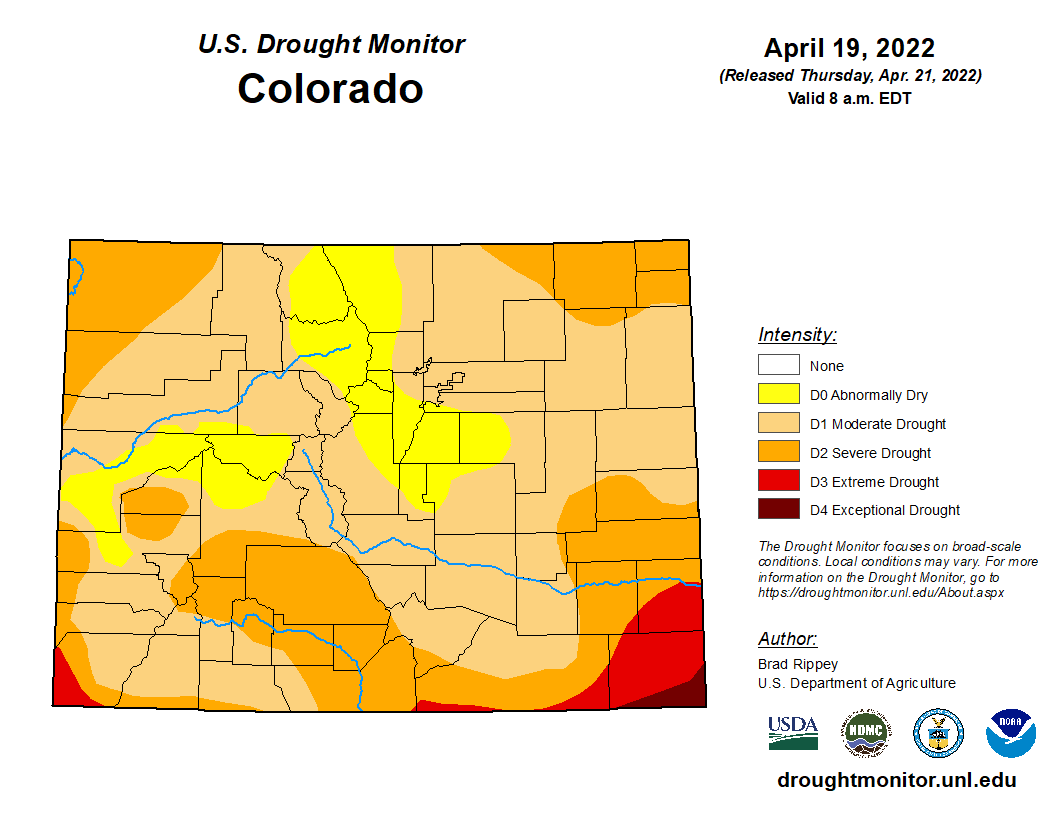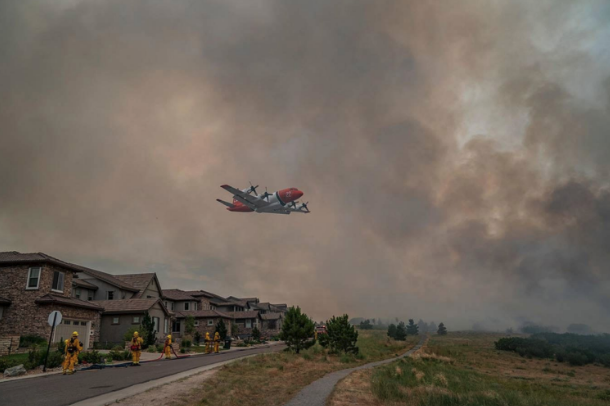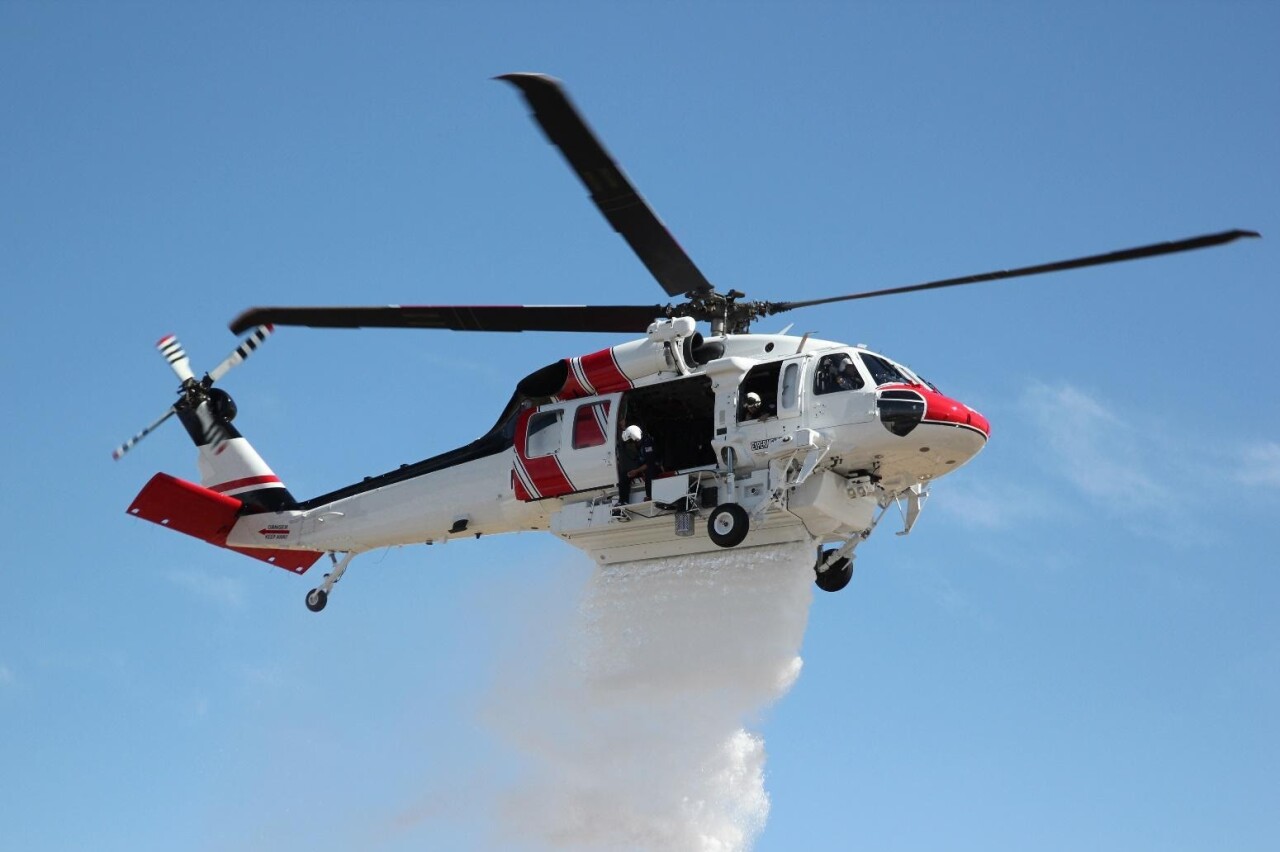As summer approaches, it feels like we should say wildfire season is well on its way too, but Coloradans know all too well that's not exactly true. It's here already. It was here a few months ago. It was here in a heartbreaking display in Boulder County at the end of December.
The risk of wildfires has expanded to a yearround threat.
On Friday — a day of “extremely critical” fire weather across the entire eastern half of Colorado — state officials provided an annual wildfire forecast, detailing what they expect from this year’s wildfires and how residents across the state can stay safe.

In this Denver7 360 In-Depth report, we’ll tell you about:
- The wildfire forecast for the rest of the spring and summer
- Why officials say we're more prepared than ever before
- What kinds of aircraft we have our hands on
- The plan for a statewide dispatch center to coordinate wildfire resources
- Easy ways you can recreate safely and responsibly
We will start with the good news: Colorado's fire officials say the state is more prepared than ever before to attack wildfires this year. We'll get more into that in a minute, but it doesn't mean we're out of the woods.
“I feel good about how prepared we are, but I know we’re going to have some tough days, some bad days,” said Mike Morgan, director of the Colorado Division of Fire Prevention and Control (DFPC) on Friday.
He broke down what we can expect as 2022 progresses: Drought conditions and the high likelihood of large fires will travel across the southern half of the state to the western slope. By late June, the western slope may see monsoonal moisture. Along the Front Range, current forecasts show that extreme drought conditions will continue into July.
The state's 2022 Wildfire Preparedness Plan, which was released on Friday afternoon, said projections suggest an earlier-than-normal start to the “core fire season” in the second half of May across southern Colorado. Warm and dry conditions will bring “drought intensification” and early snowpack runoff.

"While it is too early to forecast with accuracy what the 2022 core fire season will bring for certain, significant wildland fire potential is expected to remain above normal in many areas of Colorado during the late spring and into summer," the report reads.
The strategy moving forward? Detect wildfires early and attack aggressively.
Earlier in the day Friday, Gov. Jared Polis and other officials also announced new legislation to help with this preparedness, as well as response and recovery.

They would create different grant fund programs — see above — that will help homeowners, businesses and governmental entities in the rebuilding process after a natural disaster. In addition, Senate Bill 206 would create the Office of Climate Preparedness that will help prepare for wildfire response in the future.
The conversation around wildfires goes hand-in-hand with Colorado's drought and snowpack situations.
A quick overview of the current drought situation: We're in a slightly better position compared to where we were at this point last year. Still, all of the state is abnormally dry and:
- 87% of the state is experiencing moderate or worse drought
- 33% of the state is experiencing severe drought or worse drought
- 4% of the state is experiencing extreme or exceptional drought
Below is the latest map showing drought in Colorado.

This dryness has had a profound impact on the Colorado River, which was named the most endangered river in the United States last week.
As for snowpack — the levels fell below 13 inches of snow-water equivalent and below 90% of median levels for the 30-year period as of last week. A quick melt-off of the snowpack, and lack of precipitation in the spring and early summer, would create worsening drought conditions and drier fuels that would be conducive to more fire starts and fires that could burn faster.
Let's revisit DFPC's strategy we mentioned above — detect fires early and attack them aggressively. Two important resources will help with this plan.
🔥 First, Colorado has its hands on (and near) some pretty intense aircraft.
It's not uncommon for fires to burn in areas that are rocky, rugged and steep. In many cases, it's dangerous for firefighters to hike to the fire's perimeter and therefore, the best place to attack is from the sky.

Should Colorado earn a competitive contract for a second state-contracted large air tanker and state-contracted Type 1 helicopter, our firefighting fleet would look like this:
- Three Type 1 helicopters
- Two Type 2 helicopters
- Two large air tankers
- Two multi-mission aircraft
- Two single-engine air tankers
In addition to these aircraft, the state has also secured a Firehawk, which will become available sometime in November or December.
What is a Firehawk? Glad you asked. It's a hell of a machine.
Formally called a Sikorsky S70i Firehawk helicopter, it is a state-of-the-art helicopter fully equipped to help with firefighting efforts across the state. The $24 million chopper is outfitted with a 1,000-gallon water tank, extended landing gear to accommodate the tank, a retractable snorkel that can refill the tank in less than one minute, and a rescue hoist.

The state-owned aircraft can also transport up to 12 firefighters to the fire line and rescue people when needed. It is designed to stop fires before they can grow.
“It is a true multi-mission firefighting machine,” said Brad Schneider, the regional sales manager of United Rotorcraft. “It's rugged, it was built for battle and the new battlefield for the Firehawk is the fire scene.”
🔥 Second, the state wants to implement a statewide fire resource mobilization dispatch center, where officials can coordinate with all of Colorado’s fire-related resources yearround. The good news on this front is the Legislature already approved this recommendation and it is being developed right now. The center will be called Colorado Coordinated Regional Mutual Aid System, or CCRMAS.
“What this allows us to do is to build a statewide dispatch center in partnership with our federal partners, so we would be working with them to dispatch aviation assets as well as a regional and statewide mutual aid system for fire-based resources,” DFPC Director Mike Morgan said.
We will keep you updated on the CCRMAS as it is developed.

We head out on hikes expecting to see beautiful views. A winding dirt path. Singing birds. Maybe a river or, if we're lucky, a moose. We rarely, if ever, run out the door thinking we'll stumble upon a wildfire.
Luckily, staying prepared isn't tough. It just means a couple extra minutes of planning and a few extra things in your backpack. Just as state officials are preparing for wildfires, we must too.

Here’s what public land officials say you should visit public lands:
- Be aware of current fire bans and regulations
- Be familiar with the trail or have a map handy. Keep an eye on alternate routes in case you need to quickly leave the area
- Be prepared for a visit to public lands by creating a plan, keeping a trail map handy and considering alternative routes you can take to leave the area.
- Check the weather forecast and parking options
- Charge your phone
- Bring plenty of food and water
- Wear appropriate clothing and hiking shoes for possible changing conditions
- Never hesitate to call 911 if there is an emergency and if you see a fire or smoke. Try to text 911 if you don’t have enough cell service to get a phone call through
And of course, sign up for county-level alerts for emergencies so you're always in the know. You can find a full list of them by clicking here.
Stay safe out there, Colorado!
Editor's Note: Denver7 360 stories explore multiple sides of the topics that matter most to Coloradans, bringing in different perspectives so you can make up your own mind about the issues. To comment on this or other 360 stories, email us at 360@TheDenverChannel.com. See more 360 stories here.


